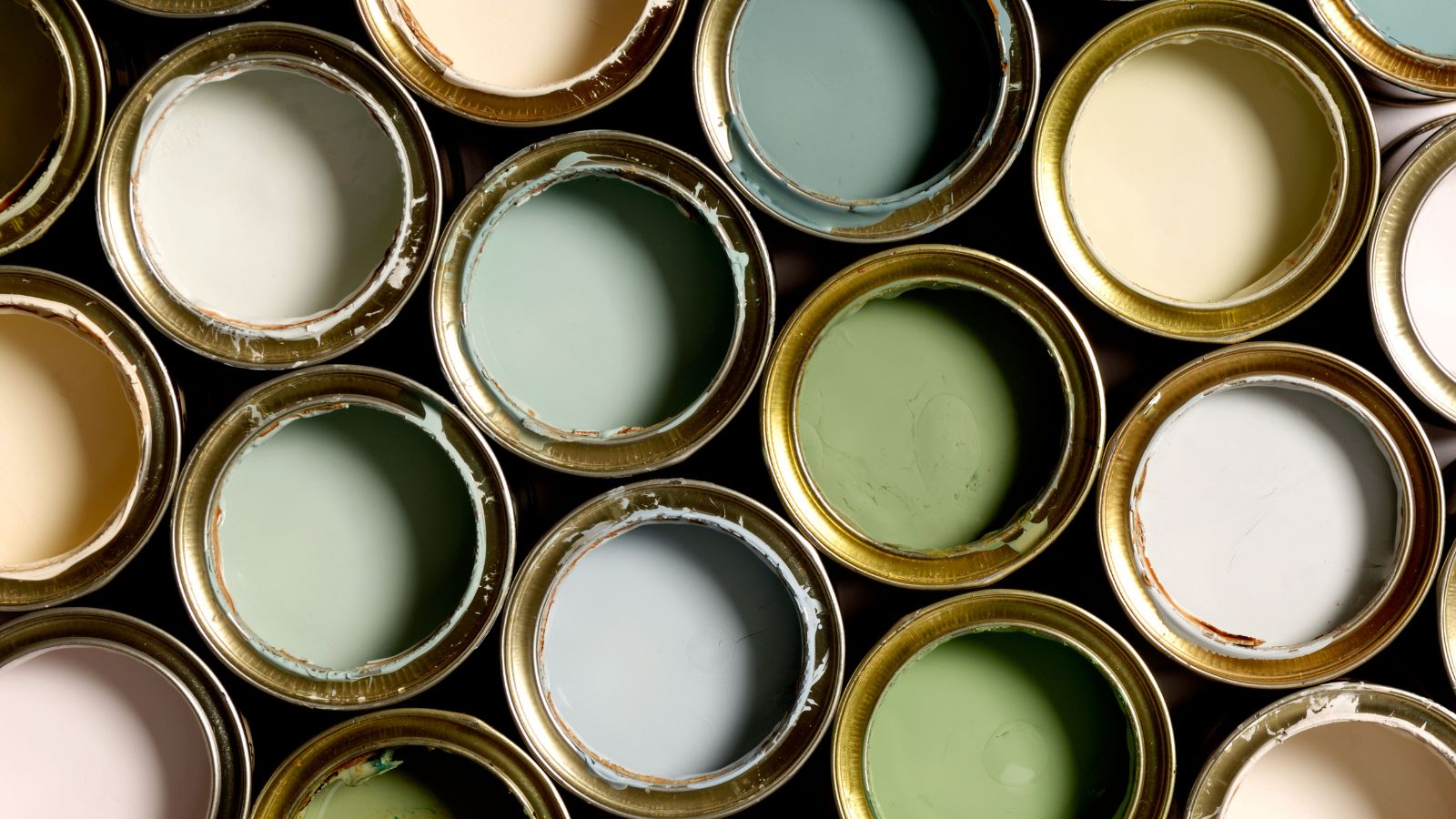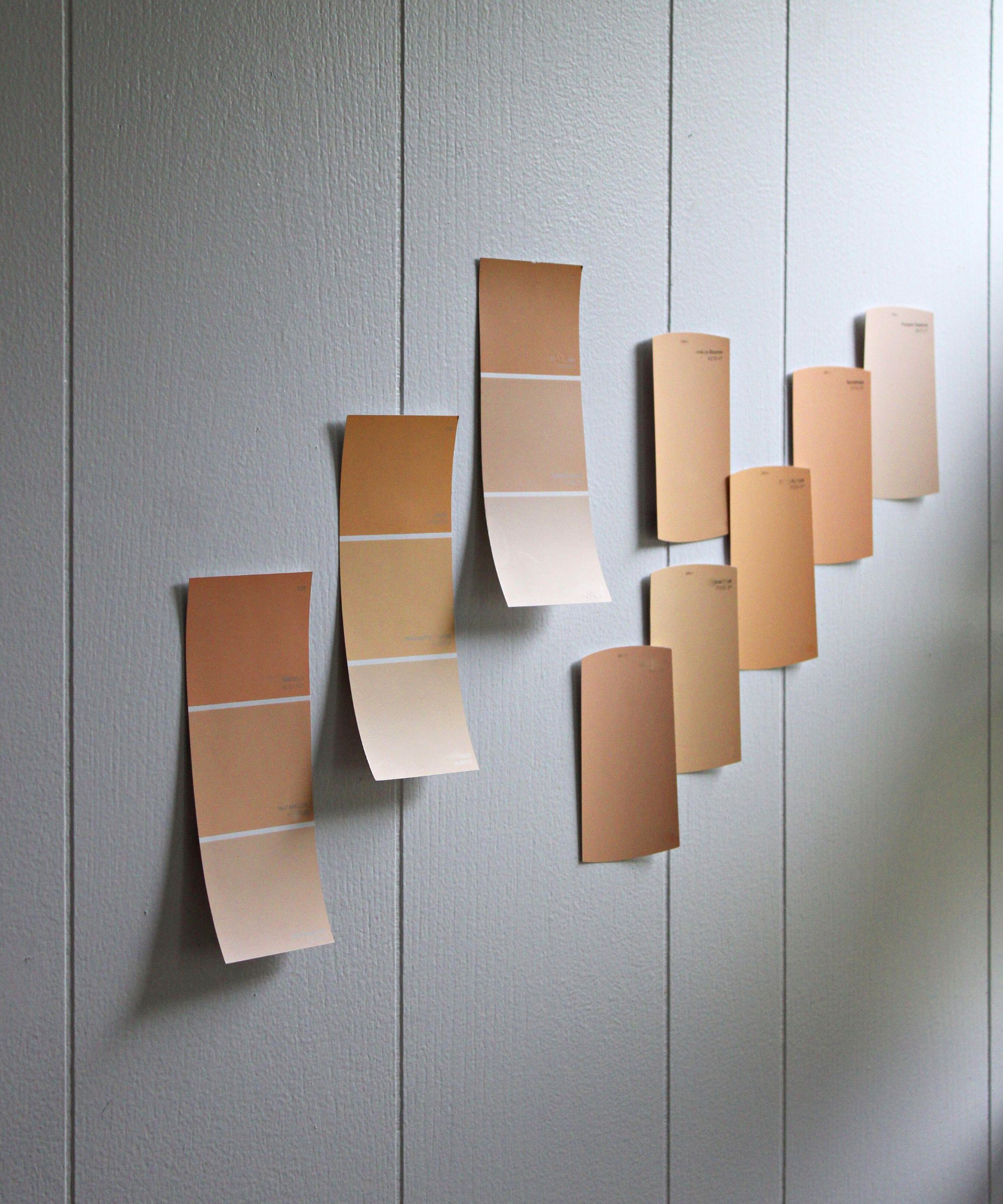How to match paint already on a wall – learn the secrets from the experts
Need to match paint already on a wall? Here’s how to successfully patch your paint after scrapes and marks


While we can try to keep our homes as pristine as possible, scuffs and marks are almost inevitable as we go about our daily lives. But if they’re spoiling the look of your room, you may be wondering how to match paint already on a wall to make it look as good as when it was first painted.
Knowing how to touch up paint on walls is a skill worth mastering for all the high-traffic areas of a home that are prone to marking.
And to make your efforts in painting a room last, we’ve asked the experts for their advice on matching paint already on a wall for a flawless touch-up.
How to match paint already on a wall

Matching paint colors can be a tricky task for a number of reasons, but there are three methods you can use to try to get as accurate results as possible, and these are the best ways to match paint already on a wall.
It is important to know before starting out, however, that it is almost impossible to find an exact match for your existing paint. Even if you know how to paint a wall like an expert and how to prepare walls for painting, the results may not be the same.
'Even if you have found the right paint color, slight variations in finish or batch will mean it won’t be an exact match, so it’s always best to paint the whole wall rather than trying to touch up areas,' recommends Ruth Mottershead, creative director at Little Greene.
'If you don’t want to paint a whole room, ensure you paint a full wall exactly into the corners and up to the baseboard and ceiling lines. The way light hits different walls within a room will trick the eye into seeing a very close match as the same color.‘
1. Bring home paint samples
Using store paint chips can be one of the best ways of sampling multiple colors against your wall at a time and allows you to test the colors under the different light conditions your room experiences throughout the day. While this might work better if you know the brand of the paint, do not despair if you have no idea.
'If you’re unsure of the brand and color a wall is painted in, start with color cards,' says Little Greene's Ruth Mottershead. 'Hold these up to the wall with the paint chips directly against your existing paint. Once you have selected the closest matches, order sample pots, and paint these on the wall.'
A good paint trick if you do not want to test your paint samples directly on your wall is to take a section of wallpaper backing paper and paint the tester pot onto that instead. This creates your own paint chip that is more accurate than printed cards as it shows off the real dried paint color.
2. Use an at-home color matching tool
A quicker way of matching paint at home is to use a color matching tool such as this one on Amazon or a phone app. While a purpose-bought tool will be much more accurate than a phone app, a high-quality app will give you a range of colors that may be a good match for your wall that you can then test at home.
These tools are easy to use as they analyze the color with a small sensor, isolate the color, and provide a precise reading of the color to your phone. These devices are popular with paint experts and designers who often use them to match colors from other items to inspire schemes and make choosing paint colors easier.
3. Cut a paint chip from your wall
It may sound drastic, but a good way to match paint already on a wall is to cut a small sample from it and take it to a paint specialist or store with a color-matching service. This is the best method for finding a paint match that is as accurate to your current color as possible.
If all other paint matching methods have failed, use a sharp utility blade to score and remove a small square of painted drywall in a non-conspicuous area. You should try to get a sample that is at least 1in in size for the best results.
At a paint store, staff will use a spectrophotometer to analyze the chip and match it to their brand's closest color. They may not be able to match a trademarked color, so if you can use the same brand as the original paint you will get the best match.
Before patching your wall paint, remember to fill the hole you made in the drywall beforehand. As this method uses a lot of time, precision, and effort, it may be worth considering how much it costs to paint a room to weigh up whether it is worth it.
How accurate is paint matching?
Paint matching can be fairly accurate if it is done by a professional. ‘What’s crucial also is to match paint of the same brand where possible to maintain the same finish and quality of paint,’ says Lucy Searle, global editor in chief of Homes & Gardens. ‘This will eliminate some of the variables that can make your efforts less successful.’
But it is important to note that different batches of paint will have slight variations naturally due to variations in pigments and mixing.
Why is matching paint so hard?
Matching paint can be difficult due to the sheer amount of finishes, hues, and undertones that makes up paint collections. What's more, paint dries a slightly different color to when it is wet, making matching already dried paint a bit of a guessing game.
Sign up to the Homes & Gardens newsletter
Design expertise in your inbox – from inspiring decorating ideas and beautiful celebrity homes to practical gardening advice and shopping round-ups.

Chiana has been at Homes & Gardens for two years and is our resident 'queen' of non-toxic living. She spends most of her time producing content for the Solved section of the website, helping readers get the most out of their homes through clever decluttering, cleaning, and tidying tips. She was named one of Fixr's top home improvement journalists in 2024.
-
 Everyone is obsessed with vintage tiles right now – bring the nostalgic charm of this classic design feature into your home with our 5 design ideas
Everyone is obsessed with vintage tiles right now – bring the nostalgic charm of this classic design feature into your home with our 5 design ideasHonor the past with our favorite ways to decorate with vintage tiles, as suggested by interior design experts
By Eleanor Richardson Published
-
 'It's a fast reset button' – using the 1, 2 ,3 ,4, 5 decluttering method cleared my persistent mess in seconds
'It's a fast reset button' – using the 1, 2 ,3 ,4, 5 decluttering method cleared my persistent mess in secondsIt's easy, effective and so quick to do
By Ottilie Blackhall Published
-
 7 dorm room organizing rules for less clutter and more space
7 dorm room organizing rules for less clutter and more spaceExperts offer their top tips for creating a well-organized dorm room, no matter the size, space, or layout.
By Ashley Chalmers Published
-
 How to maximize storage in a small or shared dorm room, according to pro organizers
How to maximize storage in a small or shared dorm room, according to pro organizersFind out all the hidden storage zones you might never have noticed
By Ashley Chalmers Published